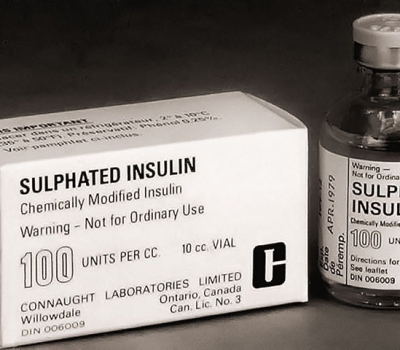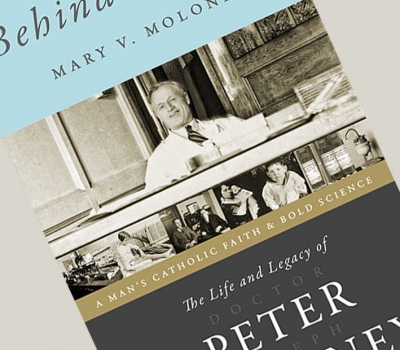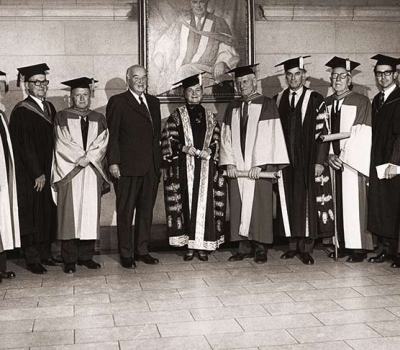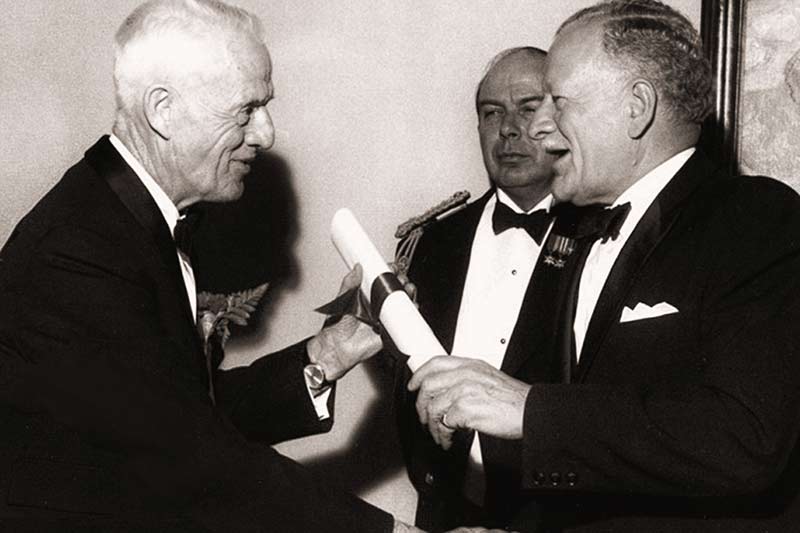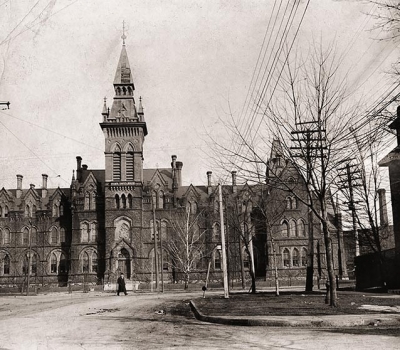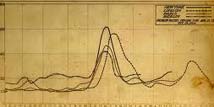 1916: Peter Joseph Moloney in Department of Physical Chemistry. Awarded a bursary to study in California at Berkeley.
1916: Peter Joseph Moloney in Department of Physical Chemistry. Awarded a bursary to study in California at Berkeley.
1917: P. J. Moloney, M.A., working at Dominion (now Central) Experimental Farm, Ottawa, where he proved the increased reliability of testing moisture content by drying flour in a vacuum oven, as compared to a non-vacuum oven. Grain moisture content affects the quantity of grain, price discounts and premiums, as well as grain storability, so moisture content may affect economic return. Changing the moisture content of grain changes its weight. One thousand pounds of wheat at 17.5 percent moisture would weigh 954 pounds at 13.5 percent.
1918: Dominion Experimental Farm, Ottawa. Work: Isolation of benzoic acid by acidification and cooling to 0 C; Isolation of benzoic acid from hydrolyzed hippuric acid by pretreating with milk of lime, then acidification and cooling benzoic acid. The price of benzoic acid was 5-6 times higher after WWI, making its extraction a crucial process. It was needed for dye synthesis in Canada, as German dye was $16/ounce, due to post WWI conditions.
1919: Double appointment to staff member at Connaught Laboratory and the School of Hygiene.
1921: Connaught Laboratory, University of Toronto. Invented a quick acting hydrogen electrode, long before pH meters were generally available, his first achievement to gain international recognition. A device commonly called the pH meter which measures pH (i.e. hydrogen ion concentration / acidity) of solutions, this apparatus was essential in measuring acidity of broths used in culture of bacteria (the bacteria that poured out the diphtheria toxin); the pH would be monitored, and when it changed, reaction conditions would be altered to maintain optimum production; Dr. Moloney's invention would reach equilibrium in less than 1 minute, all previously available pH meters took much longer; and it could be rapidly washed and sterilized.
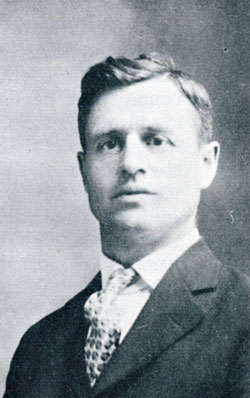 1921?-4: Purification of insulin by charcoal adsorption and dilution, making use of benzoic acid for concentrating and purifying insulin as well as removing insulin from carbon. Research done with Findlay. The first products of insulin were crude, causing unpleasant side reactions. The purified product was virtually free of reactions.
1921?-4: Purification of insulin by charcoal adsorption and dilution, making use of benzoic acid for concentrating and purifying insulin as well as removing insulin from carbon. Research done with Findlay. The first products of insulin were crude, causing unpleasant side reactions. The purified product was virtually free of reactions.
1924: Contacted by Dr. Fitzgerald from Pasteur Institute, Paris where he was investigating Gaston Ramon's work. Told to "drop everything" and begin diphtheria toxoid production.
1925: Made assistant Director of Connaught Laboratories. First Diphtheria Toxoid production in the world was in Canada at Connaught, by Dr. Moloney with C. B. Weld. Of equal importance was the reaction test Moloney developed for those previously exposed to the disease, before widespread use could begin. The Moloney Test was used to detect a high degree of sensitivity to diphtheria toxoid, in which diluted toxoid is given intradermally. First use was 6 Canadian provinces, mainly Ontario, October 1925. The US and Britain were not enthusiastic to use the toxoid. Fitzgerald and others from Connaught had to present the information in person outside Canada. Moloney's reaction test eased concerns for the US in the mid 1930s but Britain resisted until WWII. By the early 1940s they relented. Stabilization of the Schick Test. Before immunization became prevalent, the Schick Test was developed to determine if a person was already immune, but it was unstable. In 1913, Schick designed a skin test as a means of determining susceptibility or immunity to diphtheria in humans. Diphtheria toxin will cause an inflammatory reaction when very small amounts are injected intracutaneously. The Schick Test involves injecting a very small dose of the toxin under the skin of the forearm and evaluating the injection site after 48 hours. A positive test (inflammatory reaction) indicates susceptibility (nonimmunity). A negative test (no reaction) indicates immunity (antibody neutralizes toxin). Dr. Moloney improved it. Floccule Analysis of Tetanus Toxoid.
1936: Elected fellow of the Royal Society of Canada.
Early 1940's: A combined vaccine for diphtheria and pertussis, with Dr. R. J. Wilson.
1945-6: Improvements in the production of Heparin: an enzymatic method to extract heparin, with E. M. Taylor, patented; Heparin is an anticoagulant. Purification and crystallization of penicillin with Dr. A. Tosoni.
1945: Full professor at U of T.
1946: First Award received was the O.B.E., Officer of the British Empire. Awarded for a major contribution to the war effort, large scale production of a potent polyvalent Gas Gangrene Antiserum.
1955: Discovered that insulin injected into animals could give rise to highly specific antibodies. Freund's adjuvant is an antigen solution emulsified in mineral oil, used as an immunopotentiator (booster of the immune system). "In the early days (1920's), it was thought that insulin was not an antigen; this was held in the 30s, 40s and 50s in spite of reports to the contrary in vitro, in animals, and in man. In our own experiments serum from a horse which had received insulin in Freund's Adjuvant, when mixed with insulin in vitro showed a typical immuno reaction namely flocculation."
Early 1960's: Developed Sulphated Insulin in the early 1960s for rare diabetic cases who were allergic to regular insulin.
1964: Banting Medal recipient at the 5th Congress of the International Diabetes Federation.
1964: Awarded Charles Mickle Fellowship, the most prestigious award within the purview of the Faculty of Medicine of University of Toronto ($1000).
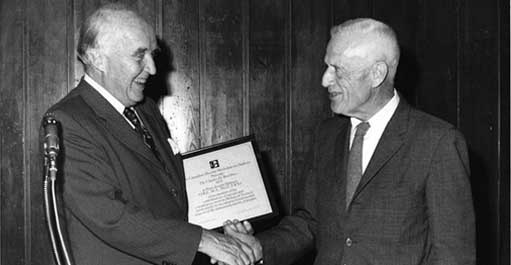
1967: Awarded the Gairdner Award for his long and distinguished career. The Gairdner Foundation was created in 1957 by James Arthur Gairdner to recognize and reward the achievements of medical researchers whose work contributes significantly to improving the quality of human life. Since the first awards were made in 1959, the Gairdner Awards have become Canada's foremost international award. They hold up the pinnacle of achievement as a mirror to Canadians, and in so doing, play a role in helping Canada achieve its goals of excellence. Receipt of the Gairdner is traditionally considered a precursor to winning the Nobel Prize in Medicine; as of 2007, 69 Nobel Prizes have been awarded to prior Gairdner recipients.
1971: Awarded the Charles Best Medal and the Hoescht Prize at the 5th Canadian Hoescht Workshop on Diabetes.
1971: Doctor of Laws, Honoris Causa U of T, on the 50th anniversary of the discovery of insulin, received Doctor of Laws along with 6 other surviving members of the original Banting and Best Team.
1977: Monetary gift, name of building 90 at Connaught Labs to be changed to the Moloney Building. Presented with a bound copy of all his publications, 1919-present.
From University of Toronto rare book room interactive timeline:
Initial work: the summer of 1921
1920: October 31. Banting reads "Relation of the Islets of Langerhans to Diabetes with Special Reference to Cases of Pancreatic Lithiasis" by Moses Barron in Surgery, Gynecology and Obstetrics, Nov. 1920. The article prompts him to jot down a note for an idea for experimentation.
November 6. F. G. Banting meets J. J. R. Macleod in Toronto for the first time. Macleod later arranges for Banting to use the Physiology Labs at the University of Toronto to try out his idea.
1921: J. B. Collip wins a Rockefeller Travelling Fellowship and returns to the University of Toronto from the University of Alberta in Edmonton. [Note: he arrived in the fall]
April/May. F. G. Banting arrives in Toronto and begins, with Mr. Best on May 17, the experiments which lead to the discovery of insulin at the University of Toronto.
July 30. Dog 410 is the first to receive extract.
August 4. Dog 408 receives injection of extract. On August 4th the extract is called "Isletin" for the first time.
August 11. Dog 92, depancreatized, receives regular injections of the extract. Lives for 20 days.
The work continues: expanding the research and the first clinical trials
1921: September/October. J. J. R. Macleod returns from Scotland and asks that F. G. Banting and C. H. Best repeat their experiments to confirm their results.
November 14. F. G. Banting and C. H. Best deliver the first paper on the results of their research to the Journal Club of the University of Toronto Department of Physiology. This paper is later published as "The internal secretion of the pancreas" in the Journal of Laboratory and Clinical Medicine).
November 18. Dog 33 "Marjorie" is depancreatized and a longevity experiment begins on December 6th.
December. J. B. Collip joins Banting, Best, and Macleod and begins insulin experiments with rabbits.
December 20. Dr. Joseph Gilchrist, a friend of F. G. Banting, is the first human to receive the pancreatic extract manufactured by Banting and Best. It is administered orally and has no beneficial results.
December 22. J. B. Collip demonstrates that glycogen is formed in the liver of a diabetic dog given pancreatic extract and determines that the extract enables a diabetic liver to function normally.
December 30. F. G. Banting, C. H. Best, J. B. Collip, and J. J. R. Macleod attend the annual conference of the American Physiological Society in New Haven. Banting delivers an address entitled: "The beneficial influences of certain pancreatic extracts on pancreatic diabetes". The abstract was published as "The Internal Secretion of the Pancreas" in the American Journal of Physiology, 59 (Feb. 1922).
1922: January. J. J. R. Macleod assembles a team and directs work on the physiological action of insulin. The University of Toronto insulin team now includes: F. G. Banting, C. H. Best, J. B. Collip, J. Hepburn, J. K. Latchford, and E. Clark Noble, under Macleod's direction.
January 11. The first injection of Banting and Best's extract is given to a hospitalized patient. The injection, given to fourteen year old Leonard Thompson at the Toronto General Hospital, is administered by Ed Jeffrey, the house physician under the supervision of Dr. Walter R. Campbell and Dr. Duncan Graham. The injection has little effect.
January 14. Press coverage of the discovery begins in Toronto, in a brief article in the Toronto Star Weekly.
January 23. J. B. Collip's extract is successfully administered to Leonard Thompson at the Toronto General Hospital.
Success and the push for large scale production
1922: January 25. Agreement made with the Connaught Anti-Toxin Laboratories for the manufacture of insulin.
February 7. F. G. Banting and C. H. Best deliver a lecture entitled "The effect of pancreatic extracts on blood sugar and urinary sugar in experimental diabetes" to the Academy of Medicine, Toronto. The paper is published in The Journal of Laboratory and Clinical Medicine, vol. 7, no. 8 (May 1922) as "Pancreatic extracts."
March. Banting, Best, Collip, Dr. Almon. A. Fletcher, and Dr. Campbell publish "Pancreatic extracts in the treatment of diabetes mellitus" in The Canadian Medical Association Journal. This paper describes the case of Leonard Thompson in detail and constitutes the first official announcement that an extract has been developed which alleviates the symptoms of diabetes in human beings.
March 22. The first major press coverage of a "diabetes cure" appears in issues of the Toronto Star, Globe, and Telegram. The news quickly spreads beyond Toronto
March. Production of insulin fails; no potent insulin is made between March and May of 1922. J. B. Collip, C. H. Best and others work on regaining the formula and Best finally succeeds in May 1922. [Note: It was Dr. Moloney who actually succeeded according to Banting.]
April. Dr. G. H. A. Clowes, Director of Research at Eli Lilly & Co., having been in the audience at the annual conference of the American Physiological Society in New Haven, makes a formal offer to Macleod about the possibility of collaboration for the large-scale production of insulin. His offer is refused.
April/May. A diabetic clinic is established at the Christie Street Veterans Hospital under the direction of Drs. Gilchrist and Banting.
May. At the annual meeting of the Royal Society of Canada F. G. Banting, C. H. Best, J. B. Collip, and J. J. R. Macleod deliver a series of papers on insulin.
May 3. Macleod, as spokesman for the whole research group, presents a paper at the Association of American Physicians annual meeting in Washington, D. C. The paper: "The effects produced on diabetes by extracts of pancreas" by Banting, Best, Collip, Campbell, Fletcher, Macleod, and Noble is published in the Transactions of the Association of American Physicians (1922). This was the first widely publicized announcement of the discovery within the medical profession and the first time the extract was referred to in public as "insulin."
Beyond Toronto: lives are saved
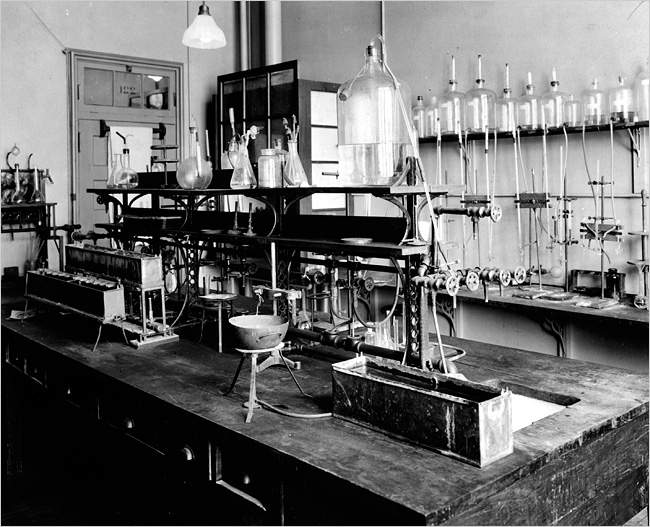 1922: May 22. Jim Havens, a diabetic patient under the care of Dr. J. R. Williams in Rochester, is the first person in the United States to receive extract.
1922: May 22. Jim Havens, a diabetic patient under the care of Dr. J. R. Williams in Rochester, is the first person in the United States to receive extract.
May 30. In an effort to manufacture insulin on a large scale an agreement is made between the Governors of the University of Toronto and Eli Lilly & Co. of Indianapolis.
Late May. J. B. Collip returns to the University of Alberta and continues insulin experiments there; C. H. Best is put in charge of the production of insulin for all of Canada at the Connaught Anti-Toxin Labs. [Note: Best's letter in the book Margaret and Charlie, states Collip was let go May 9]
June. J. J. R. Macleod continues to direct experiments on insulin in Toronto and begins research on fish as a source of insulin at the Marine Biological Laboratory in St. Andrews New Brunswick.
June. A Diabetic Clinic is formed in the Toronto General Hospital under the direction of Dr. Duncan Graham. Doctors working in the clinic include: Dr. A. A. Fletcher, Dr. W. R. Campbell, and Dr. F. G. Banting.
June 21. J. J. R. Macleod sends the insulin formula to Dr. W. D. Sansum in Santa Barbara, California (who had already begun experimenting with the manufacture of insulin) and to Dr. Rollin T. Woodyatt in Chicago. Both doctors begin small- scale production of insulin for clinical and experimental uses.
July 10. Mrs. Charlotte Clark, a patient at the Toronto General Hospital, is the first person to receive insulin for surgery. Teddy Ryder, a five-year old diabetic patient from New Jersey, arrives in Toronto for treatment.
July. Clinical trials of insulin begin at diabetic clinics in Boston, under Dr. Elliott P. Joslin, and in Morristown, under Dr. Frederick M. Allen. Eli Lilly & Co. supplies the insulin. Soon after, other clinical trials are set up in major cities in the United States and Canada.
August 16. Elizabeth Evans Hughes, Banting's star patient, arrives in Toronto to be treated.
Beyond North America: clinical use expands
1922: August 17. First recorded meeting of the Insulin Committee at the University of Toronto. The Insulin Committee was established by the Board of Governors of the University of Toronto early in 1922 to control the licensing, patenting, and trademarking of insulin as a pharmaceutical product.
September 16. Col. Albert Gooderham, Chairman of the Insulin Committee, writes to Banting, Best and Macleod soliciting their accounts of the discovery of insulin. They each respond with a written submission.
October. Elsie Needham is brought back to consciousness from a state of coma with the use of insulin.
October. August Krogh begins experimenting with and producing insulin in Denmark.
November. Patent for the manufacture of insulin in Great Britain and Ireland assigned to the Medical Research Council.
November 25. Prominent diabetic doctors assemble in Toronto to discuss the clinical use of insulin.
December. Canadian patent granted for insulin and assigned, in Jan. 1923, to the Governors of the University of Toronto.
1923: January 23. United States Patent number 1,469,994 for the manufacture of insulin is awarded to J. B. Collip, C. H. Best and F. G. Banting.
March 28. Ontario Medical Association sends out a circular about a course of instruction on the treatment of diabetes with insulin being made available to all interested Ontario doctors.
May. A special issue of the Journal of Metabolic Research devoted to articles on the clinical use of insulin is published. This is the first publication of the results of the clinical trials of insulin conducted in diabetic clinics across North America.
The Nobel prize : insulin available world-wide
1922: May 16. Insulin made commercially available in Great Britain (the first country in which this is done).
1923: June. Exclusive agreement with Eli Lilly & Co. ends. Other pharmaceutical companies are now invited to apply for licenses to manufacture insulin for distribution in the United States and for foreign export licenses. The Insulin Committee begins to collect royalties from pharmaceutical companies on the sale of insulin.
mid-October. Insulin is made commercially available in the United States and Canada.
October 25. The Nobel Prize in Medicine is awarded to F. G. Banting and J. J. R. Macleod.
1924: Insulin is now widely available; marketed and distributed in countries all over the world by large British and American Pharmaceutical companies.
1925: September 14. League of Nations Health Committee agrees upon an international standard for determining the potency of insulin.
1926: Insulin is now patented or trademarked in countries 44 countries world-wide.
J. J. R. Macleod publishes Carbohydrate Metabolism and Insulin. (London: Longmans Green & Co., 1926).


